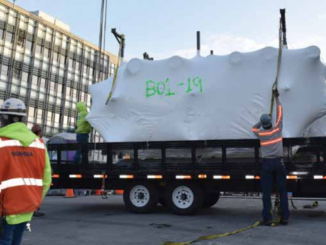By / By Karen Forner Attorney, Marketing Director, Founder, Employer Solutions Law

On February 10, 2022, the Department of Labor and Industries, Division of Occupational Safety and Health (DOSH) updated its directive focused on safety inspections at construction worksites. Broadly, Directive 2.25 outlines “Focused Inspections at Worksites,” how such inspections are conducted, general procedures required for inspections, eligibility requirements for inspections, employer associations, and DOSH approved safety and health recognition programs. This article outlines the Directives and highlights key areas of interest for employers.
Conducting Focused Inspections
As stated in the Directive, the purpose of a focused inspection is to reduce the amount of time spent during an inspection by focusing only upon certain hazards as opposed to a sitewide inspection. Importantly, focused inspections are only available for employers who participate in a safety and health recognition program. These approved safety and health recognition programs include, among others, the Associated Builders and Contractors of Western Washington, the Associated General Contractors of Washington Safety Team, the Building Industry Association of Washington, and the Mechanical Contractors Association of Western Washington. A full list of participating companies can be found in the Directive (available at lni.wa.gov/dA/fe6d33cc4b/DD225.pdf).
If an employer provides verification of participation in an approved trade association safety recognition program, it may request a focused safety inspection or focused hygiene inspection. A focused safety inspection includes an assessment of hazards related to falls, electrocution, excavation and trenching, overhead and struck-by, traffic control, motor vehicle operations, and other potential serious hazards. A focused hygiene inspection includes an assessment of respiratory hazards, hearing loss, confined spaces, dermal and eye exposure to corrosives, and other potential serious hazards.
While focused inspections do not necessarily include review of written records, analysis of site-specific plans may be done to address questions related to hazard identification. Interviews are expected. Inspectors are instructed to not cite general violations when identified and abated during the inspection. This does not apply when general violations are regulatory or statutory like OSHA 300 logs or posting of citations and notices.
When serious violations are identified, or if required programs are deficient/non-existent, the inspector is directed to stop the focused inspection and conduct a full, comprehensive, inspection. If this is done, the compliance supervisor must be consulted when a focused inspection becomes more comprehensive.
It is important for employers to understand that, should a focused inspection be requested, any area subject to the inspection be free of serious violations. Otherwise, that employer may be subject to a full, comprehensive, inspection that could result in additional fines and citations.
Compare this to full inspections. There, the DOSH inspector will conduct a full jobsite walkthrough. This greatly increases the likelihood of the inspector observing a violation. While employers strive to ensure employees abide all applicable statues and codes, it is not always the case. A focused inspection offers employers an opportunity to limit an inspector’s focus. By removing them from the entire jobsite—by focusing only on specific areas and serious violations—it is vastly preferable when considering potential liability. Employers should strive to be approved businesses, able to request or have focused inspections, in order to reduce the likelihood of comprehensive inspections.
Focused Inspection Eligibility
To determine whether an employer is eligible for focused inspections, it must participate in an approved safety and health recognition program. DOSH determines whether or not any employer is eligible, and an employer may be removed from focused inspection at any time.
Reasons for removal can include, but are not limited to, repeat serious violations, willful violations, placement in the Severe Violator Enforcement Program (SVEP), or conduct that interferes with a full an orderly inspection. Should an employer be removed, it will be notified by DOSH.
Employer Associations
Given the utility of focused inspections, employers should consider joining one of DOSH’s approved safety programs. Each employer association must submit a letter of interest to the DOSH Deputy Assistant Director that includes a description of the association’s overall safety recognition program, how the program will address and reduce hazards for employees of member companies, and a procedure for review of programs, audits, audit frequency, and training. As such, these associations—when approved—are crucial resources for employers. ■
Employer Solutions Law is familiar with all employer associations explicitly noted in the DOSH Directive and can connect any interested employer with them. Moreover, Employer Solutions Law is working with an industry association not currently approved by DOSH, so it can be included as an approved association under DOSH Directive 2.25.



